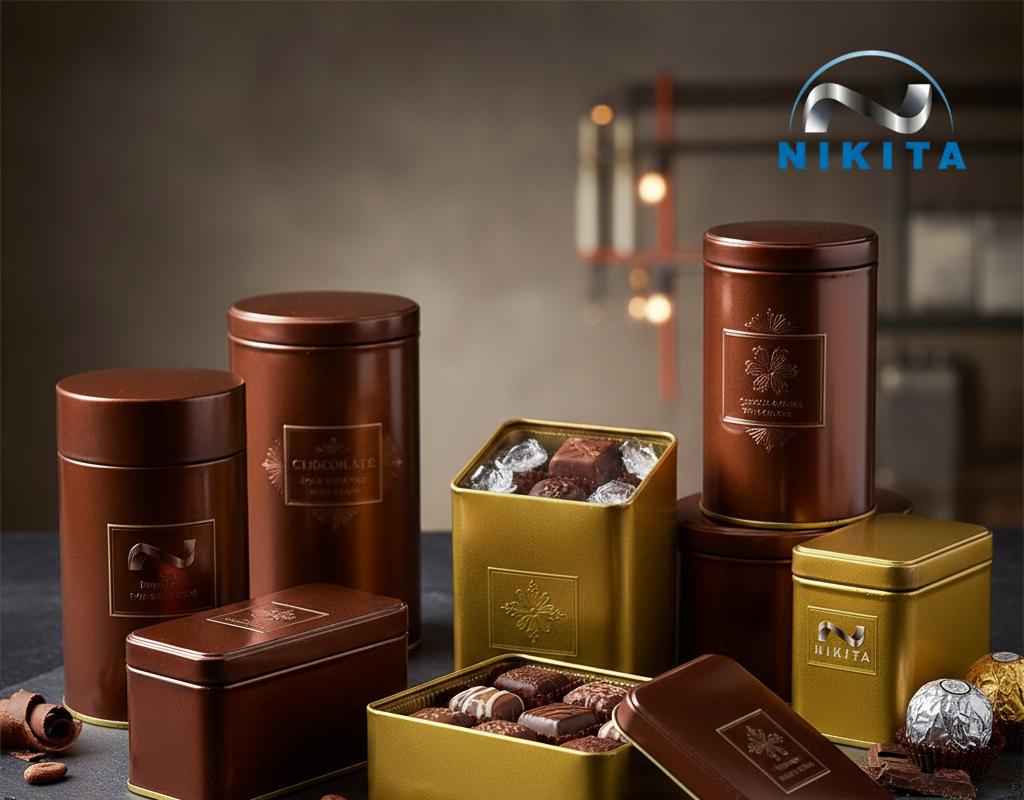Introduction
In the world of food and confectionery, packaging is far more than just a protective layer. It plays a vital role in ensuring freshness, safety, and consumer trust. Brands are under pressure to balance sustainability with product protection, especially when it comes to delicate items like chocolates. The debate between chocolate tins manufacturers and plastic packaging suppliers is becoming sharper in 2025 as both industries adapt to new consumer expectations and stricter regulations.
The Importance of Shelf Life in Packaging
Chocolate is a sensitive product that reacts quickly to light, air, and temperature. Packaging must act as a barrier to protect its natural flavour and aroma. Shelf life is not only a technical measure but also a marker of value for consumers and retailers. When products spoil early, businesses face returns, reputational harm, and unnecessary food waste.
Chocolate tins manufacturers have focused their expertise on creating airtight, tamper-resistant packaging. The non-toxic tin plate protects against UV rays, moisture, and bacteria, helping to extend shelf stability without relying on heavy preservatives. Plastic suppliers, while convenient and widely used, often struggle to maintain the same level of long-term protection, particularly against light and oxygen exposure.
Safety Considerations in Food Packaging
Food safety has become a non-negotiable factor for modern brands. Any packaging that compromises safety risks damaging consumer trust. The material, coating, and design must all align with international food safety standards.
-
Barrier Protection: Tin containers act as strong barriers to external contamination.
-
Tamper Evidence: Tins offer tamper-proof closures that reassure buyers.
-
Chemical Safety: Tin plate does not leach harmful substances into the product.
-
Consumer Assurance: Premium appearance combines with trusted safety performance.
Plastic packaging suppliers often need multiple layers, coatings, or additives to achieve a similar level of safety. Even then, concerns remain over microplastics and leaching during storage, especially in fluctuating temperatures.
Branding and Consumer Experience
Packaging influences more than just product safety. It also determines how consumers perceive a brand on the shelf. Tin packaging offers premium aesthetics with high-quality print surfaces that allow for striking branding. This has made tins especially popular among luxury chocolate makers and confectionery brands looking to stand out.
Plastic, though flexible and cost-effective, often lacks the same premium appeal. For chocolates, where gifting, experience, and indulgence play a key role, tins create an emotional connection that plastic struggles to replicate.
Sustainability: The Deciding Factor
Sustainability has become a priority across industries. Consumers and regulators demand eco-friendly packaging that reduces waste and supports recycling systems.
-
Tin Plate: 100 percent recyclable, retains properties across multiple recycling cycles, widely accepted in circular economy models.
-
Plastic: Recyclability varies, often down-cycled, and prone to environmental concerns over long-term degradation.
Chocolate tins manufacturers position themselves as future-ready partners for brands that want to reduce their carbon footprint without sacrificing safety or shelf life.
Key Comparisons at a Glance
-
Shelf Life: Tins outperform plastics with superior barrier protection.
-
Safety: Tin plate is non-toxic and tamper-proof, while plastic may raise concerns.
-
Branding: Tins enable premium finishes that attract consumer attention.
-
Sustainability: Tin plate is infinitely recyclable without quality loss.
Conclusion
The choice between chocolate tins manufacturers and plastic packaging suppliers is ultimately about long-term brand vision. Tins offer stronger protection, improved safety, and a premium experience while meeting sustainability expectations. Plastics may be cheaper upfront, but they pose risks in safety perception, shelf stability, and environmental impact.
Nikita Containers, founded in 1993 in Umbergaon, Gujarat, has grown from a small aluminium tube manufacturer to a global supplier of high-quality metal containers, catering to diverse industries including food, confectionery, cosmetics, and custom packaging. With eco-friendly, recyclable tin plate solutions offering durability, safety, and premium appeal, the company continues to uphold its mission of delivering excellence, trust, and innovation while contributing to sustainable packaging worldwide.
FAQs:
Q1: Do tins keep chocolates fresher for longer than plastic?
Yes. Tin packaging blocks light, air, and moisture more effectively than plastic, extending shelf life naturally.
Q2: Are tin containers safe for food contact?
Yes. Tin plate packaging is food-safe, non-toxic, and approved under global safety standards.
Q3: Can tins be recycled multiple times?
Absolutely. Tin packaging can be recycled indefinitely without losing its strength or quality.
Q4: Why do luxury chocolate brands prefer tins?
Tins offer premium looks, strong protection, and sustainability that align with consumer expectations for gifting.
Q5: Are tins more expensive than plastic?
While the initial cost may be higher, tins deliver better ROI through shelf life, safety, and brand value.



